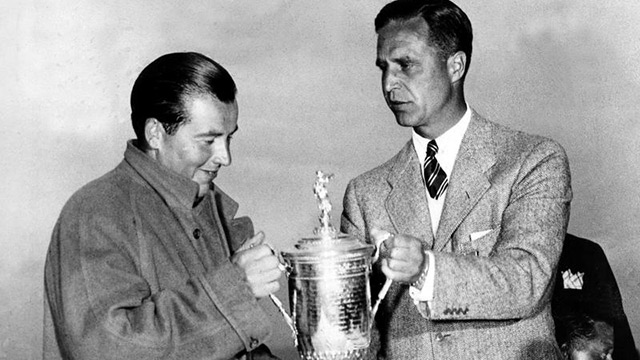NEWS
U.S. Open: Oakmont requires crash course ahead of toughest test in golf

OAKMONT, Pa. (AP) — Sam Parks Jr. rates among the most unlikely winners in U.S. Open history, especially compared with the Hall of Fame list of champions at Oakmont.
He was a 25-year-old club pro from Pittsburgh who played on the winter tour without ever winning. And then he took down a field in the 1935 U.S. Open that included Walter Hagen and Gene Sarazen, Denny Shute and Horton Smith.
An upset?
Maybe in pedigree. But not in preparation.
In the months leading up to the U.S. Open, Parks played nine holes at Oakmont every morning before going to work at nearby South Hills Country Club so he could learn the nuances of the fastest greens in golf and develop a strategy. Sarazen wrote of Parks in a column going into the Open, "His knowledge of Oakmont and its pitfalls should be a great asset." And it was.
RELATED: U.S. Open tee times, pairings
USGA executive director Mike Davis only wishes more players would take note.
Considering the U.S. Open is held at different courses — this is the record ninth time at Oakmont in the last 89 years — Davis is perplexed by those who show up on Monday as if it were any other week and then play no more than two practice rounds.
"If you think about what the U.S. Open has been for a long time, it's golf's ultimate test," Davis said. "It's testing every aspect of the game to the nth degree. ... That rolls into course management in the sense that when you take this ultimate test, you're put on the greatest architectural golf courses. Great architecture seems to bring out better strategy. It requires you to study it."
Davis doesn't think it's any coincidence that the two players he saw the most often at Merion ahead of the 2013 U.S. Open were Justin Rose and Phil Mickelson, the winner and runner-up. He mentioned Jordan Spieth showing up at Chambers Bay last year to play two rounds on the weekend, another on Monday and two nine-hole rounds before it started. It helped that Spieth's caddie, Michael Greller, used to caddie at Chambers Bay when the course first opened.
Practice and study only goes so far or Mickelson would have a gold medal instead of six silvers.
And the crowded calendar in golf — especially in an Olympic year — makes it impractical for players to pour everything into one tournament.
Even so, Davis felt so strongly about preparation for a new course last year that he said, "There is no way — no way — a player would have success here at Chambers Bay unless he really studies the golf course and learns it."
"The idea of coming in and playing two practice rounds ... and using your yardage book, that person's done — will not win the U.S. Open," he said.
More players are taking time to see a U.S. Open course in advance. Rickie Fowler, Smylie Kaufman and Justin Thomas were at Oakmont two weeks ago. Jason Day checked in Friday. Adam Scott was another early arrival.
Spieth played 27 holes in early May when he was in town. He has been at Oakmont over the weekend and planned to stick to the same plan as last year — 72 holes over five days — even if that means not playing in Mickelson's famous money game at majors.
Jack Nicklaus occasionally played four practice rounds, keeping track of his 72-hole score to help figure out what it would take.
"I threw the ball in the rough around the greens," Nicklaus said. "But when I played, I played. I always felt when I played a practice round, it's a practice round for how I'm going to play in the tournament."
Nicklaus, a four-time champion, considers it "mind-boggling" that players would not see a course until the week of the U.S. Open.
"It's only the most important championship of the year," he said.
He said any U.S. Open requires players "to be playing one to two shots ahead." If a player gets in trouble, what's the best way out? And the greens are critical at Oakmont because of so many contours that feed the ball toward — or away from — the hole.
"More than any U.S. Open course, you've got to figure out how to be on the right side of the hole location," Davis said.
Parks died in 1997. It sounds as though he would have agreed with Davis based on his comments after his 1935 U.S. Open victory.
"A lot of players back then just weren't familiar with the fast greens like Oakmont had," Parks said. "I knew how to deal with the greens better than most did. I wanted to minimize my chances of a huge error."
This article was written by Doug Ferguson from The Associated Press and was legally licensed through the NewsCred publisher network.